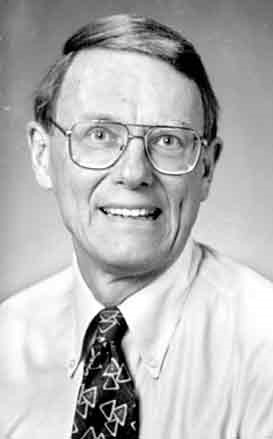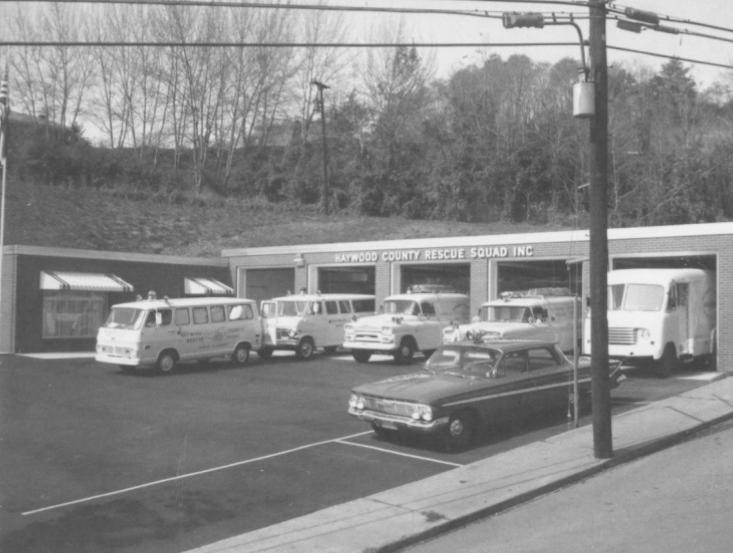Citation:
National EMS Museum People Files, NEMSM-0003 [Please include Folder/Person’s Name]
Dr. Ralph Feichter
Dr. Ralph Feichter was a local physician and a native of Haywood County who maintained an internal medicine practice in Waynesville, North Carolina. The area spanned the Great Smokey Mountains’ Appalachian region and was served by the all-volunteer Haywood County Rescue Squad which also provided the area’s ambulance service. Feichter and his colleagues became aware of the work of Dr. Frank Pantridge’s Mobile Coronary Care Unit (MCCU) clinical studies in Northern Ireland after reading the British Journal “Lancet.” Feichter quickly came to the conclusion that such a life-saving system would effectively work in his area. He then approached the Chief of the Haywood County Volunteer Rescue Squad about the concept. The chief immediately agreed and soon forty of the squad’s volunteers were screened for eligibility and approved to undergo basic life support training in early 1968. Feichter also applied to the North Carolina Regional Medical Program (RMP) for a grant to equip two mobile intensive care vehicles which would be operated by the Haywood County Volunteer Rescue Squad out of the small towns of Waynesville and Canton. When Dr. Feichter first applied for the RMP grant, the concept was that physicians would carry portable VHF radios and would try to get to the scene of the coronary and return with the patient in the ambulance. It was quickly determined that rescue MCCU vehicles were quicker in response thus requiring an alternative medical control solution to be worked out. They also considered that the MCCU could pick up an ICU nurse at the local hospital on the way to the scene. However, this idea was abandoned due to delaying the critical response to the incident.
In April of 1969, the Haywood County Rescue Squad volunteers began to complete intensive training in electrocardiography, arrhythmia recognition, cardiac patho-physiology, pharmacology, airway management and CPR. The classes were conducted two nights per week for about twelve weeks. This course was again repeated in the Fall in order to ensure trained personnel sustainment for the program. Then a new telemetry system became operational and standing orders were established by the physicians and signed off by every member of the Haywood County Medical Society. The two MCCU van vehicles became operational out of the towns of Canton and Waynesville. The early Haywood County MCCU model was viewed as “an extension of the Haywood County Hospital’s coronary care unit with Dr. Feichter personally certifying the performance standards of the volunteer paramedics as “allied health personnel” and functioning under his direct supervision pursuant to his medical license as a physician. Haywood County’s pioneering paramedic program would go virtually unnoticed outside the mountains for several years until the late Jim Page learned of their accomplishments and later wrote about it in one of his books called “Paramedics”. Dr. Feichter continued to remain extremely busy with his practice and did not take the time to publish his scientific MCCU findings in any scientific medical journals.
Credits: “Paramedics” by Jim Page, PARAMEDICS International Magazine, Haywood County “50 Years”
From 1969, a local newspaper called “The Waynesville Mountaineer” published accounts of the accomplishments of the rescue squad paramedics, especially in cases where they had successfully resuscitated patients in cardiac arrest. The Haywood County Rescue Squad maintained squad stations in Canton and Waynesville and many of the Haywood County volunteers of the Canton station worked for the Champion Paper Co., which was the largest employer for the small mountain community. The paper manufacturer and other employers of Haywood County volunteers were very cooperative in allowing the volunteers to temporary leave their job assignment in order to respond to calls, to attend basic training and the new coronary care training course. The North Carolina General Assembly would not begin the certification of advanced life support providers until 1974. Following enactment of legislation, the North Carolina State Board of Medical Examiners established new comprehensive training standards for what was designated as a “Mobile Intensive Care Technician” (MICT).” The required classroom and clinical rotation hours would exceed that of the earlier coronary care training of the Haywood County volunteers, which had placed emphasis on stabilizing cardiac patients. The majority of the original volunteers successfully completed the newly required MICT program and continued to serve their community for many years to come. It can be said that Haywood County joined that of Portland, OR, Pittsburgh, PA and Marietta, GA as pioneer non-fire department paramedic programs that actually pre-dated such fire based program as Columbus, Los Angeles and Seattle. The Haywood County Volunteer Rescue Squad continued this great tradition today as it continued to serve this ever expanding growth area.
Submitted to NEMSM June 2008, author unknown


